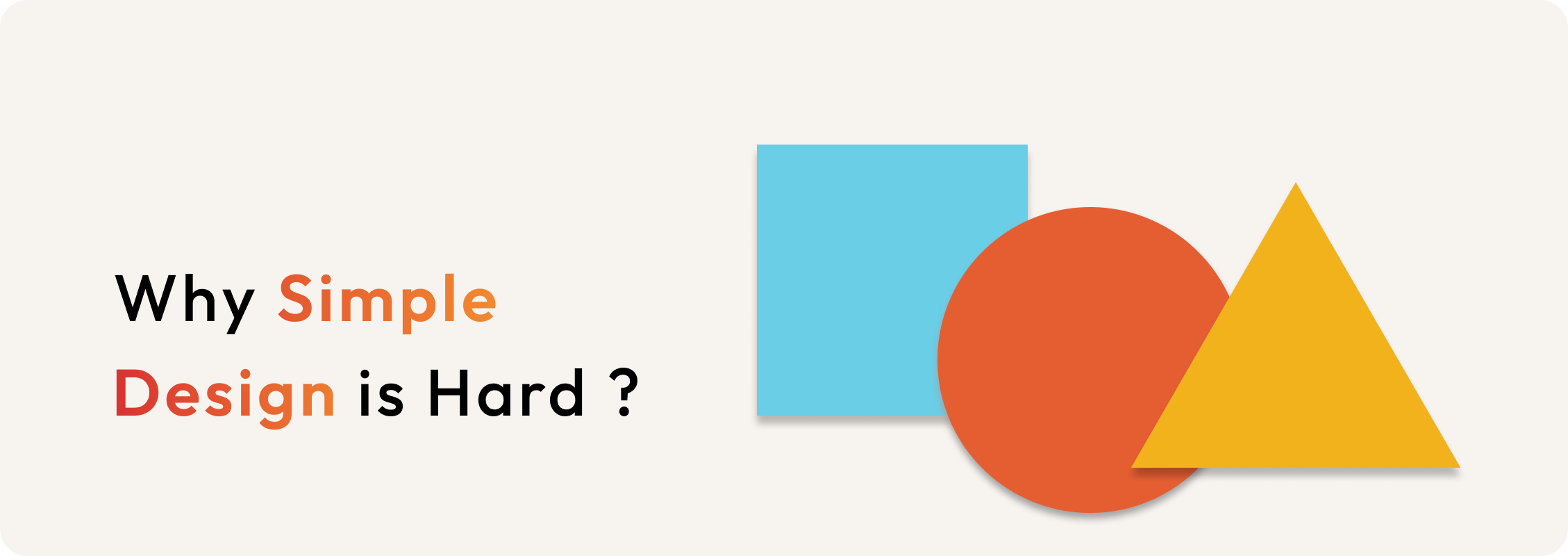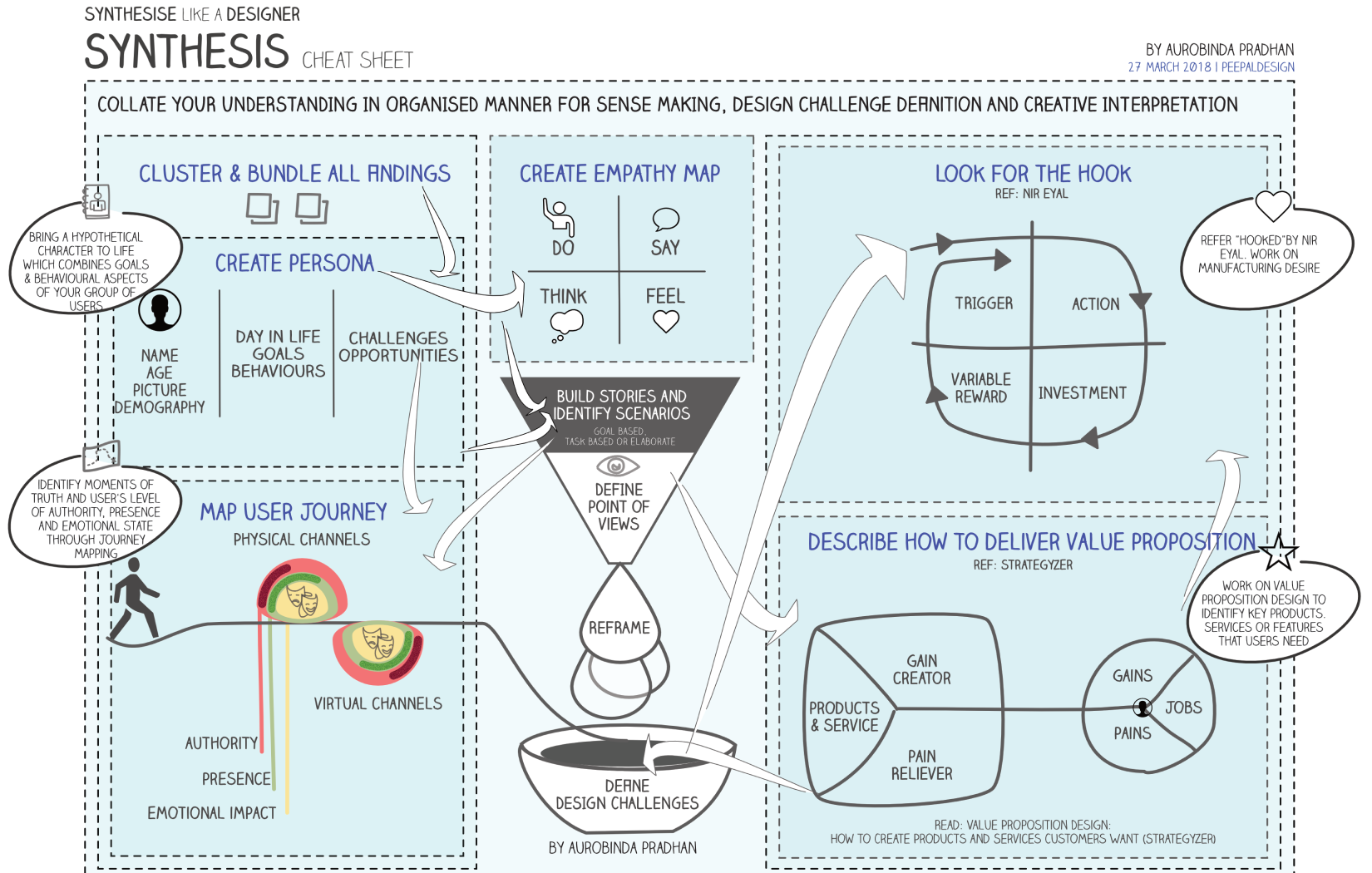Blogs
The Paradox of Simplicity: Why Designing Simple Experiences Is So Difficult
Rajesh Ghodke
Posted On November 15, 2024

Paul Rand, a legendary graphic designer known for shaping iconic brands like IBM and UPS, once said, “Design is so simple, that’s why it is so complicated.” At first glance, it sounds paradoxical, but dig a little deeper, and you realize the immense wisdom packed into this statement. Simplicity may appear effortless, but achieving it is one of the most challenging tasks for designers. And when it comes to UX design, this challenge multiplies.
What Does It Mean to Simplify UX Design?
Simplicity in UX design is more than just a minimalistic aesthetic; it’s about creating an interface that enables users to complete tasks effortlessly. Think of how smoothly you use an app like Swiggy to order your favorite biryani. Every tap, every piece of information, and every visual element serves a clear purpose. Achieving this level of simplicity requires a deep understanding of the user’s needs and the ability to streamline complexity into something elegantly simple.
The Complex Path to Simplicity
The journey to a simple design involves making complex decisions. It’s about knowing what to strip away and what to keep, ensuring that the product remains functional without overwhelming the user. And no, it doesn’t come naturally—it demands a structured, thoughtful process.
1. Understanding the User Through Research
You can’t simplify what you don’t understand. User research is the foundation of every simple UX design. Consider the example of IRCTC’s revamped website. The older version was notoriously complicated, requiring a steep learning curve. Through extensive user research and feedback, the redesigned site aimed to simplify the ticket-booking process for millions of Indians. By identifying pain points—like confusing navigation and multiple clicks—the new design streamlined booking into fewer steps, making it much easier for both tech-savvy and less experienced users.
2. The Art of Prioritization
A critical part of simplifying design is prioritizing what matters most. Every feature and element must earn its place. Let’s take PhonePe, for instance. The app is used by millions of Indians to make payments, buy insurance, and even invest in mutual funds. Despite the plethora of features, the design team ensures that the Send Money option remains front and center. This prioritization keeps the most important action—the one users come for most often—easily accessible.
3. Effortless Navigation and Flow
Simplified UX means a seamless, intuitive user journey. Imagine navigating through Aadhaar’s official website to update your details. The government has worked hard to simplify this previously cumbersome process. By reducing unnecessary steps and providing clear visual cues, they’ve made a complex system more approachable. This is a classic example of how simplifying the user flow makes the experience less intimidating and more efficient.
Why Is Simplicity So Hard to Achieve?
It’s easy to underestimate the effort required to make something simple. The challenge lies in balancing functionality with usability. For example, enterprise applications, like those used by integration experts on SAP integration suite, or design engineers using Ansys products, often have complicated workflows involving data-heavy interactions. Making these interfaces intuitive is a significant undertaking, requiring relentless iteration, constant testing, and a deep understanding of the domain.
Dealing with Subjectivity in Design Decisions
Simplicity can be subjective. One person’s “clean and minimal” could be another’s “boring and empty.” When designing for clients, especially in a culture as diverse as India’s, you might run into differences in opinion. So, how do you address this?
1. Leverage User Research and Data
Back your design decisions with data. If you’ve conducted usability tests showing that a simplified layout reduced user errors by 30%, it becomes much easier to justify your approach.
2. Illustrate the Business Value
Clients often need to see how simplicity impacts the bottom line. Explain that a simpler interface can boost efficiency, reduce errors, and improve user adoption rates. For instance, a streamlined onboarding experience for a banking app like Kotak 811 not only makes customers happy but also reduces the chances of them dropping off before completing the account setup.
Simplicity as a Business Advantage
Design simplicity isn’t just about making users happy—it’s a strategic business decision. A complex interface can drive users away, while a simple one can increase engagement and customer loyalty. Zomato’s early success was largely due to how simple and intuitive its app made restaurant discovery and food ordering. Instead of bombarding users with unnecessary features, Zomato prioritized speed and ease of use.
Strategies to Achieve Simplicity
1. Interactive Prototypes
Show, don’t just tell. Create clickable prototypes that let clients experience the difference between a cluttered interface and a simplified one. Hands-on experience can make the benefits of simplicity undeniable.
2. Real-World Examples and Metrics
Use case studies to highlight how simplification improved user experience and business outcomes. For example, showcase how removing unnecessary fields in a form increased conversion rates by a measurable percentage.
3. Continuous Testing and Refinement
Simplicity is an evolving target. User needs change, and so should your design. Keep testing and refining. A company like Tata Consultancy Services (TCS) continuously iterates on their internal platforms to make sure employees can work efficiently, simplifying processes wherever possible.
To sum up my perspective:
Simplicity in UX design is both an art and a science. It requires deep user empathy, a disciplined design process, and constant iteration. As Paul Rand said, it’s so simple, and yet, so complicated. But when done well, it can transform the way people interact with digital products, making their experiences delightful and efficient. In a country as dynamic and diverse as India, where digital transformation is rapidly growing, simplicity is not just desirable—it’s essential.


